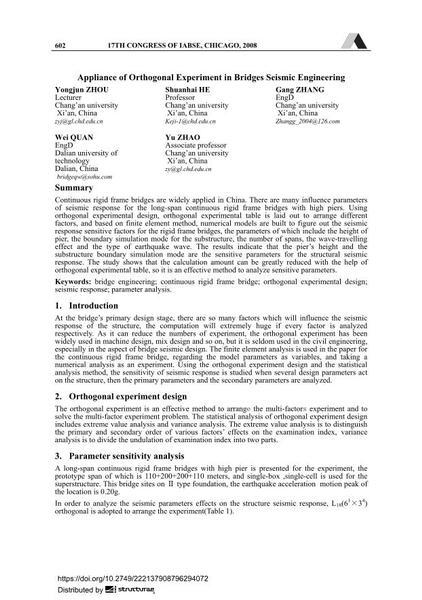Appliance of Orthogonal Experiment in Bridges Seismic Engineering

|
|
|||||||||||
Détails bibliographiques
| Auteur(s): |
Yongjun Zhou
Shuanhai He Gang Zhang Wei Quan Yu Zhao |
||||
|---|---|---|---|---|---|
| Médium: | papier de conférence | ||||
| Langue(s): | anglais | ||||
| Conférence: | 17th IABSE Congress: Creating and Renewing Urban Structures – Tall Buildings, Bridges and Infrastructure, Chicago, USA, 17-19 September 2008 | ||||
| Publié dans: | IABSE Congress Chicago 2008 | ||||
|
|||||
| Page(s): | 602-603 | ||||
| Nombre total de pages (du PDF): | 8 | ||||
| Année: | 2008 | ||||
| DOI: | 10.2749/222137908796294072 | ||||
| Abstrait: |
Continuous rigid frame bridges are widely applied in China. There are many influence parameters of seismic response for the long-span continuous rigid frame bridges with high piers. Using orthogonal experimental design, orthogonal experimental table is laid out to arrange different factors, and based on finite element method, numerical models are built to figure out the seismic response sensitive factors for the rigid frame bridges, the parameters of which include the height of pier, the boundary simulation mode for the substructure, the number of spans, the wave-travelling effect and the type of earthquake wave. The results indicate that the pier’s height and the substructure boundary simulation mode are the sensitive parameters for the structural seismic response. The study shows that the calculation amount can be greatly reduced with the help of orthogonal experimental table, so it is an effective method to analyze sensitive parameters. |
||||
